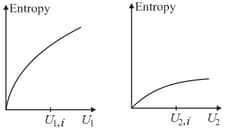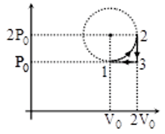Second Law of Thermodynamics
Second Law of Thermodynamics: Overview
This topic covers concepts, such as, Second Law of Thermodynamics, Terms in Second Law of Thermodynamics, Engines and Cyclic Process & Entropy of Thermodynamic System etc.
Important Questions on Second Law of Thermodynamics
In which part , air and gas(petrol) mixes in internal combustion engine?
What is the entropy change (in ) when one mole of ice is converted into water at ? (The enthalpy change for the conversion of ice to liquid water )
Given the following entropy values at 298 K and 1 atm : The entropy change for the reaction
For an increase in the entropy define ____ of nature.
Which of the following option are correct for the second law of thermodynamics?
The process which is not reversible is called _____.
The cause of irreversibility of a natural process is:
Causes of irreversible process.
The process which is not reversible is an irreversible process?
An ideal gas heat engine operates in Carnot cycle between and . It absorbs cal of heat at high temperature. Amount of heat converted to work is:
Heat cannot by itself flow from a body at lower temperature to a body at higher temperature” is a statement or consequence of
Mention the causes for irreversibility of a process.
Graphs below show the entropy versus energy of two systems and at constant volume. The initial energies of the systems are indicated by and respectively. Graphs are drawn to the same scale. The systems are then brought into thermal contact with each other. Assume that, at all times the combined energy of the two systems remains constant. Choose the most appropriate option indicating the energies of the two systems and the total entropy after they achieve the equilibrium.

The change in entropy when a ice cube at is transformed into water at in is
Take ,
Clausius's statement is a part of
The wavelength associated with the electron will be
One mole of ideal monoatomic gas is taken along a cyclic process as shown in the figure. Process
1 → 2 shown is 1/4th part of a circle as shown by dotted line process 2 → 3 is isochoric while
3 → 1 is isobaric. If efficiency of the cycle is n% where n is an integer. Find n.
One mole of an ideal monatomic gas undergoes the following four reversible processes:
Step It is first compressed adiabatically from volume to
Step then expanded isothermally to volume
Step then expanded adiabatically to volume
Step then compressed isothermally to volume If the efficiency of the above cycle is then is
What is the entropy change in during the melting of 27.3 g of ice of ? (Latent heat of fusion of ice = 330 )

